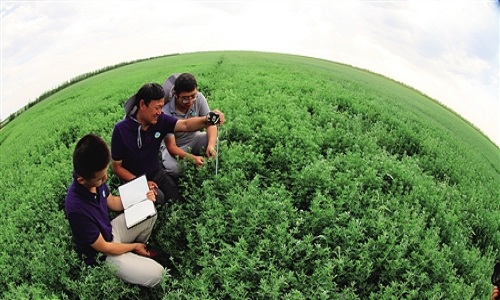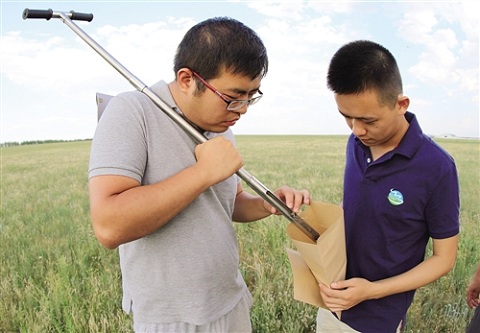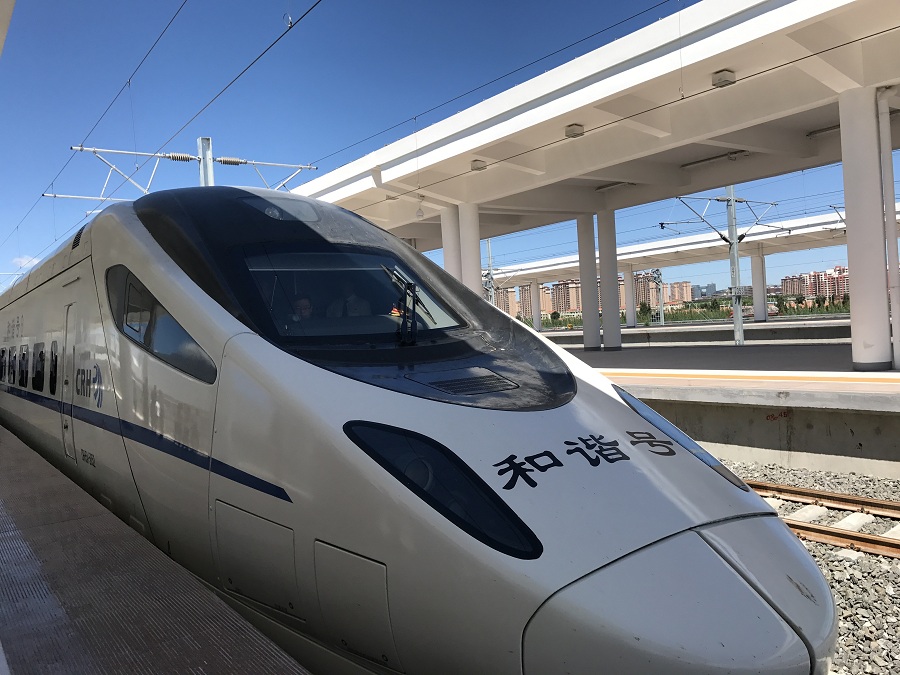High-yield grasslands harvest in Hulunbuir
(chinadaily.com.cn)
Updated: 2016-08-25
Recently, large areas of grasslands have been experimented on by the Chinese Academy of Sciences (CAS) and the management of Hulunbuir Reclamation Corporation, in Hulunbuir, Inner Mongolia autonomous region. And grass-yield of the land has since increased significantly.
Over 200 researchers and experts from the CAS, working in such fields as botany, geography and genetics, have participated in experimental projects, such as ecological husbandry, grasslands biodiversity, crops cultivation, epidemic prevention amongst livestock, and other important areas.
 |
|
Experts from the Chinese Academy of Sciences (CAS) are checking the growing condition of herbage vegetation in the experimental zone, Hunlunbeir, Inner Mongolia autonomous region, on Aug 22. [Photo by Li Xinjun/nmgcb.com] |
The experimental projects, working with a concept of environmental protection and maximizing yields, aim at restoring over 90 percent of the natural grassland area to enhance the ecological barrier, and raise the production on high-quality grass, by 10 to 15 times, which can help resolve the problem of overgrazing livestock.
A system has been created for specialists to collect the basic statistics of geographical information, the meteorological records, information on soil fertility, as well as pests and diseases present. Agrologists will then prescribe the correct fertilizer and nutrients for the grasslands.
The herbage crops are expected to yield a big harvest, with an increase of 20kg to 50kg per mu (0.06 hectares), by invested 5 yuan ($0.75) per mu. During the growing season, the production of the grasslands has risen from 46kg to 161kg per mu, and the proportion of high-quality grasslands has increased from 10 percent to 50-80 percent.
"If the system can be popularized across the region, the income will be considerable in the long run, benefiting the environment and economy, a double-win", said Pan Qingmin, the vice-director of the local science institute.
 |
|
Two researchers test soil samples taken from experimental grasslands for further analysis, Hunlunbeir, Inner Mongolia autonomous region, on Aug 22. [Photo by Li Xinjun/nmgcb.com] |

High-speed train debuts in Inner Mongolia
A bullet train departed Hohhot East Railway Station for Ulanqab marking the start of high-speed rail services using Inner Mongolia’s first newly-laid high-speed railway on Aug 3.
